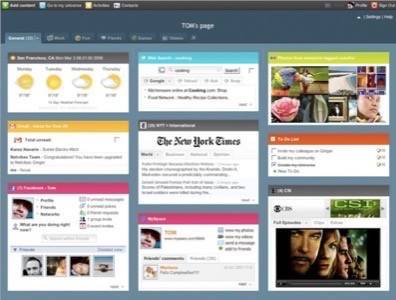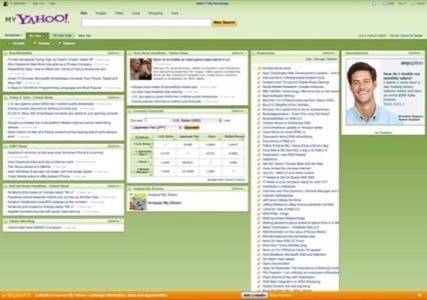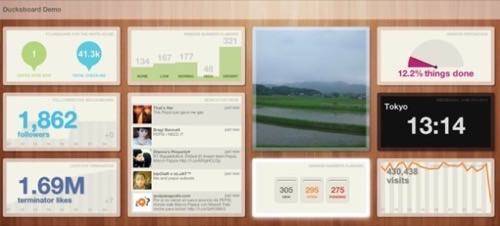
“Study the past if you would define the future.” Confucius, Chinese philosopher.
In this new ReadWriteWeb series, we look back on products that were important innovations of their time. But this isn’t merely nostalgia. As Confucius said, we’ll make it relevant by identifying lessons to apply now and in the future. We start with a product category that was all the rage in 2005-06, but is an endangered species in 2012: start pages.
What used to be called “start pages” were personalized webpages where you could store links, your most important RSS feeds, and browser applications (commonly called “widgets” and built using a popular group of browser technologies called Ajax).
Google, Microsoft and Yahoo all had a start page offering: iGoogle, start.com and My Yahoo!, respectively. However the most popular start page of the Web 2.0 era, at least in terms of Silicon Valley buzz, was a French startup called Netvibes. It launched in 2005 and went on to enjoy a few years of geek popularity. So what happened to Netvibes… indeed, the whole product category? And what – if anything – do we now use as a start page on the Internet?

Your Start Page Circa 2012
Let’s answer the second question first. A start page, by definition, is a webpage that you start your day with and come back to again and again. If there is such a thing in 2012, then for many of us it’s Facebook. Or for some of you, it’s Twitter or Google+. In short, social networks have taken the place of the product category known as “start pages.” That along with better functionality in browsers. All of my Web links are now in my Chrome browser Bookmark Manager; which is synced via the cloud, so I can access the same browser links whichever computer I’m on.
Social networks and browsers have also usurped the “widgets” of start pages. Third-party apps for Facebook and Twitter proliferate across the Web – such as the Spotify and Rdio apps for Facebook, which connect your Facebook network to your music streaming account. Meanwhile, the common term for apps you install in browsers is “extensions.” For example I have a “Clip to Evernote” Chrome extension, which when clicked saves the webpage I am on into my Evernote account.
The lesson: social networks and browsers that sync with the cloud have taken over as modern day start pages.
So What Has happened to Start Pages?
The short answer is that there is no real consumer appetite for start pages anymore.
Microsoft’s Start.com, later re-named Live.com, has long gone (Update: apparently it changed domains at least one more time and still lives at My MSN). My Yahoo survives, but it looks horribly outdated. Google’s Personalized Homepage is still around, however it’s no longer one of Google’s high profile products. In fact nowadays it’s barely alive and looks likely to be added to CEO Larry Page’s product purge very soon. The last time the iGoogle blog was updated was over a year ago.

I could be wrong – after all, the widgets still work in iGoogle. But a personalized home page doesn’t strike me as a relevant part of Google’s product strategy in the Google+ social era.
The lesson: it’s not only about personalization in today’s Web, it’s about Social + Personal.
As for Netvibes, the company is still operating but it is now focused squarely on business solutions. It offers dashboards targeted to agencies and enterprises. For agencies it does “brand observation” and other marketing campaigns, while for enterprises it monitors real-time data from the likes of Twitter and LinkedIn.
This is similar to what real-time monitoring companies like Hootsuite offer. Others are getting into this game too, such as a new service weirdly named Ducksboard. It offers a “real time dashboard for all your metrics,” tracking data from Twitter, Facebook, Foursquare and other popular services.
The lesson: Start pages based on feeds, bookmarks and widgets aren’t where it’s at in 2012. Data dashboards are.

Now if you’ll excuse me, I’m off to check my Facebook page…










